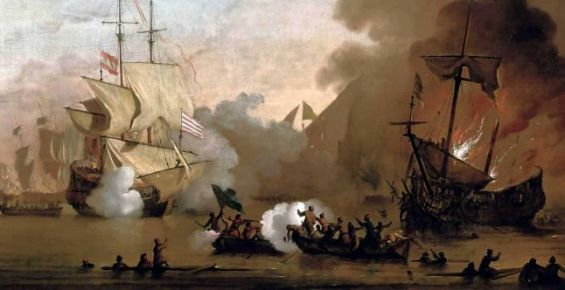Slavery in North Africa was a common practice that was linked in particular to piracy during the 19th century. On a 4th of June, in the United States Senate, a radical abolitionist senator compared slavery in Morocco, Algeria, Tunisia and Libya to the American Confederate States that refused to abolish the heinous practice.
In a speech delivered in 1860 on the «Bill for the Admission of Kansas as a Free State», American senator Charles Sumner, who was the leader of anti-slavery forces in Massachusetts, chose Morocco as an example for his arguments against slavery.
Moroccan slavery and slave-holding states in America
He geographically compared the North African kingdom, and its neighboring territories, to slave-holding states in the Lower South region of the United States. In his speech, Sumner addressed slavery in the «Barbary States», starting with Morocco’s eastern neighbor.
«Algiers, for a long time the most obnoxious place in the Barbary States of Africa, once branded by an indignant chronicler as the ‘Wall of the Barbarian world’», said the American senator. He went further explaining that the city is «situated near the parallel of 33° 30’ north latitude, being the line of the Missouri compromise, which once marked the ‘wall’ of Slavery in [his] country».
 American senator Charles Sumner. / Ph. DR
American senator Charles Sumner. / Ph. DR
As for Morocco, Sumner stated in that it is the «chief present seat of slavery in the African Barbary», that is «parallel of Charleston», the largest city in South Carolina. The American senator was determined to depict North Africa as a replica of these states, which fought a civil war against the North.
«There is no two spaces on the surface of the globe, equal in extent, which present so many distinctive features of resemblance; whether we consider the common parallels of latitude on which they lie, the common nature of their boundaries, their common productions, their common climate, or the common Barbarism which sought shelter in both».
The comments of Sumner on the features of resemblance between these Confederate states and North Africa did not stop there. The politician, using his words carefully, stated that «Virginia, Carolina, Mississippi, and Missouri should be the American complement to Morocco, Algiers, Tripoli, and Tunis».
He recalled that even after Morocco’s emperor promised in a «treaty» that slavery «might pass from the memory of men», the practice was still carried in the region. On the other hand, he indicated that «Algiers, Tripoli and Tunis, after cherishing slavery with the tenacity equaled only by the tenacity of South Carolina, have successfully renounced it and delivered it over to the indignation of mankind».
A book on white slavery in North Africa
Sumner’s comments on slavery in Morocco were not really new to his audience. In 1853, the radical republican wrote a book that addressed the practice in Morocco in a thorough way, that was backed with narratives and references.
In his book «White Slavery in the Barbary States» (J. P. Jewett, 1853), Charles Sumner slammed the North African Kingdom for maintaining slavery. «Slavery in the Barbary States is denounced as an unquestionable outrage upon humanity and justice», he wrote, recalling the stories of some European nationals who were enslaved in Morocco.

«Among the concubines of a prince of Morocco were two slaves of the age of fifteen, one English and the other French», he recalled, alleging that one of them was an Irish woman who «swept into the harem of Muley Ismail, who ‘forced her to turn Moor’ … but soon after, having taken a dislike to her, he gave her to a soldier».
Sumner’s work and statements on slavery were mainly subjected at the Confederate states. He has even used the word ‘Barbary’ (from Barbary states), to describe these states, calling them the «Barbary States of America».
In a 2013 New York Times article, Sumner was described as a «radical abolitionist» who «depicted North Africa as a disturbing analog to the American south».





 chargement...
chargement...













